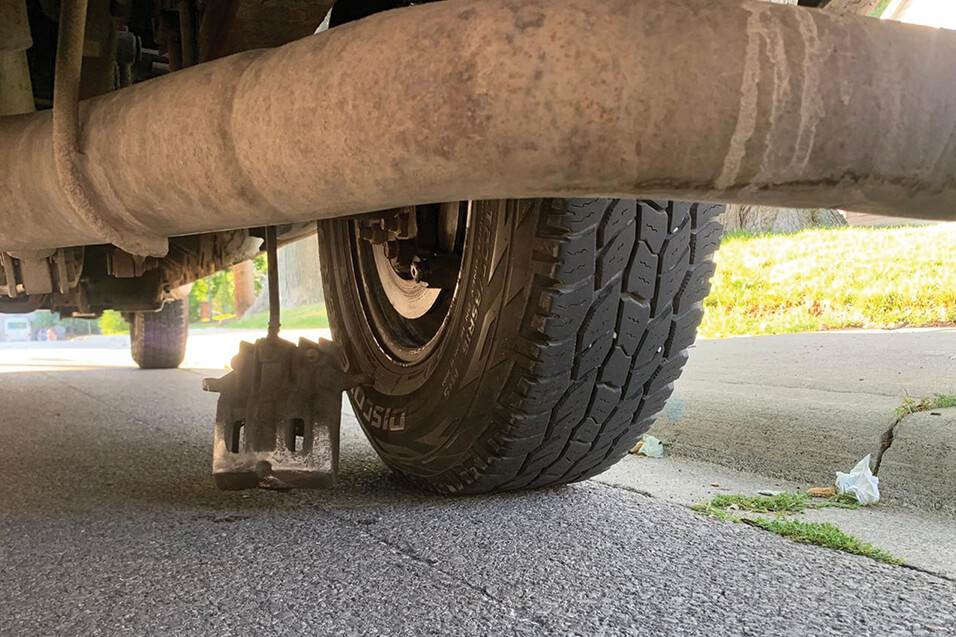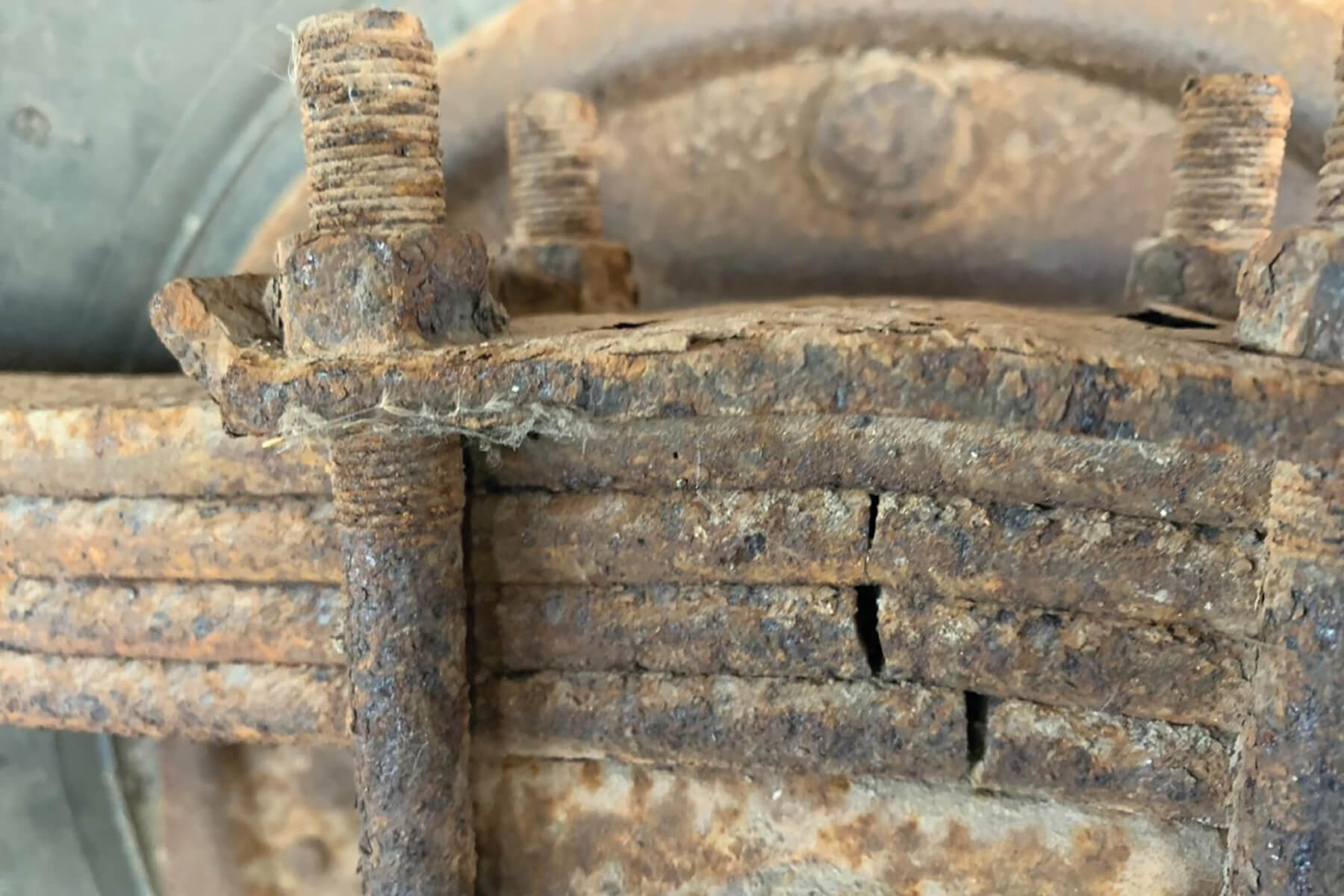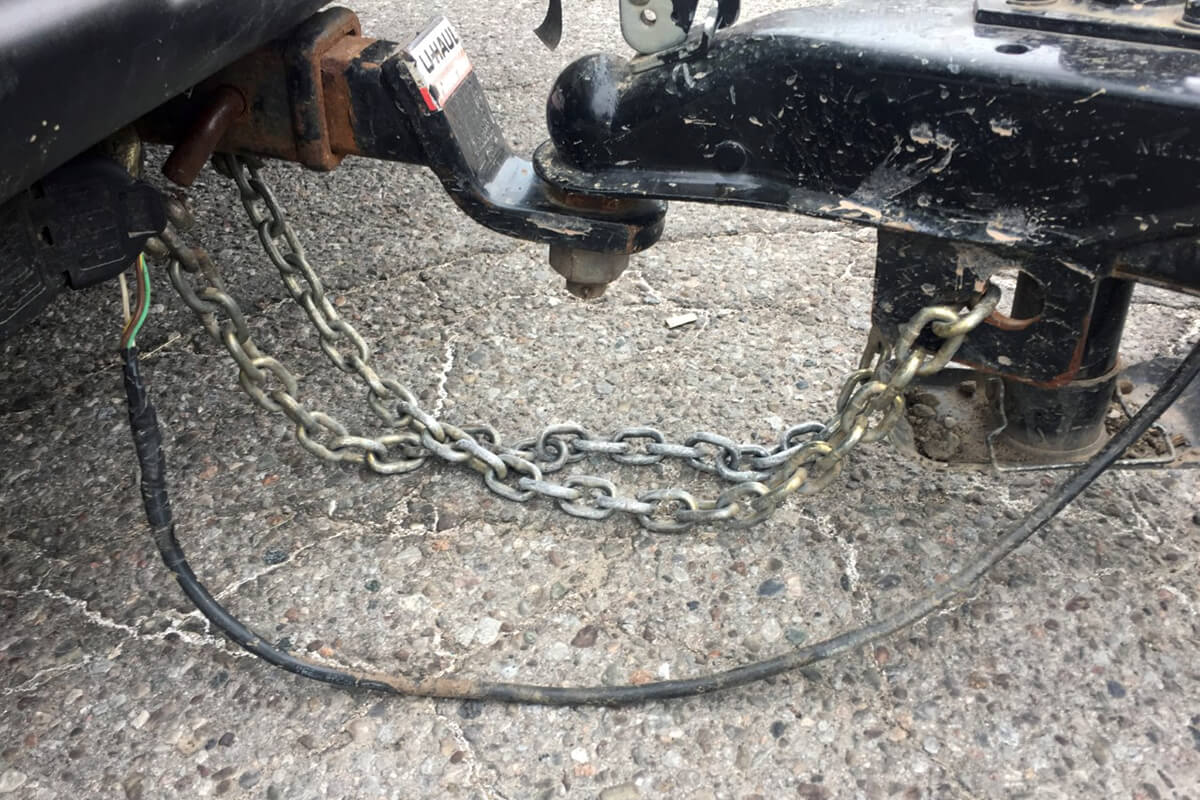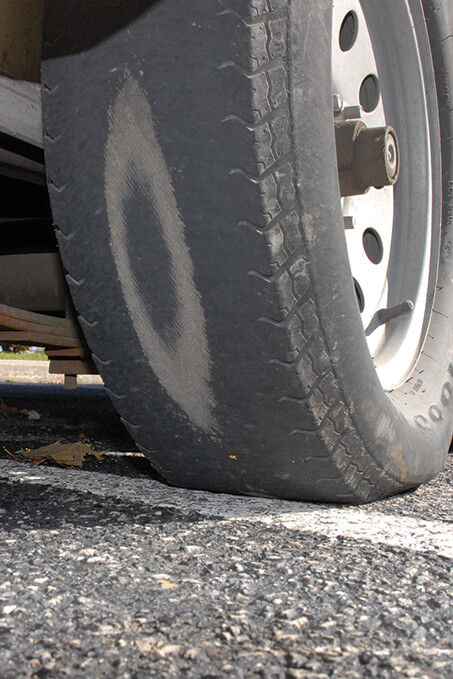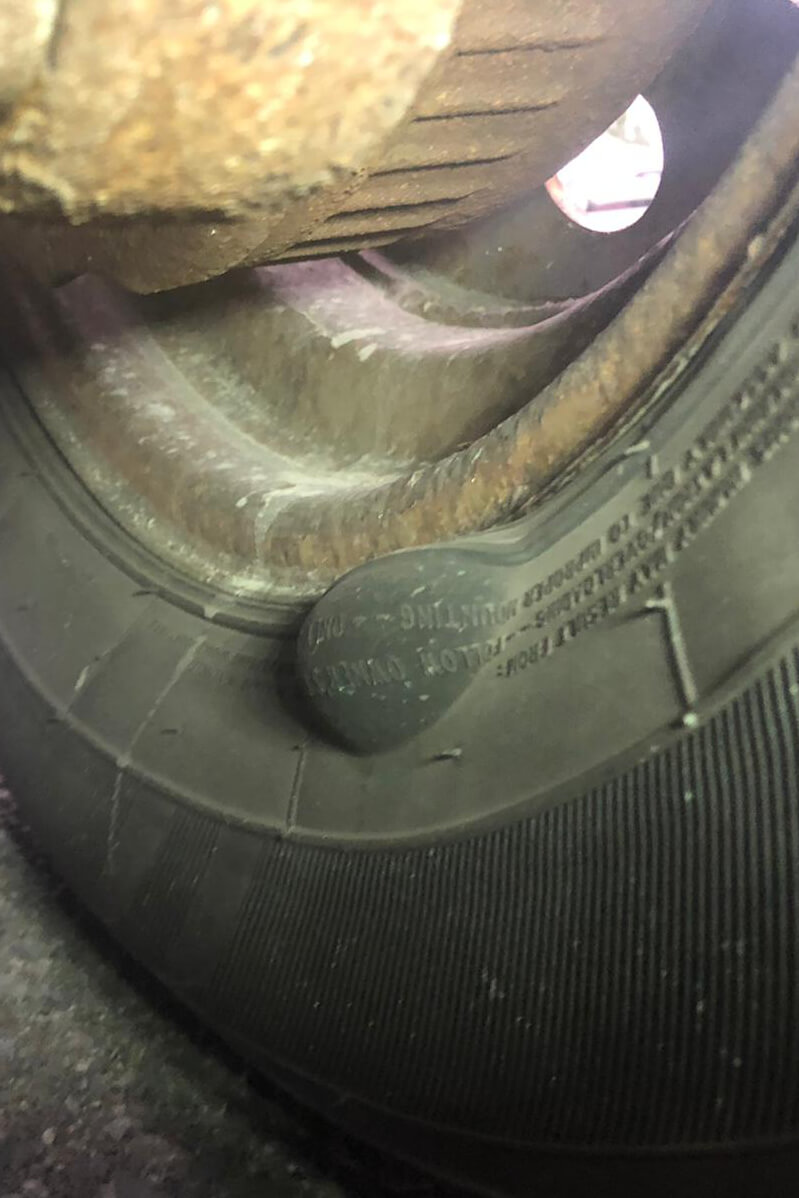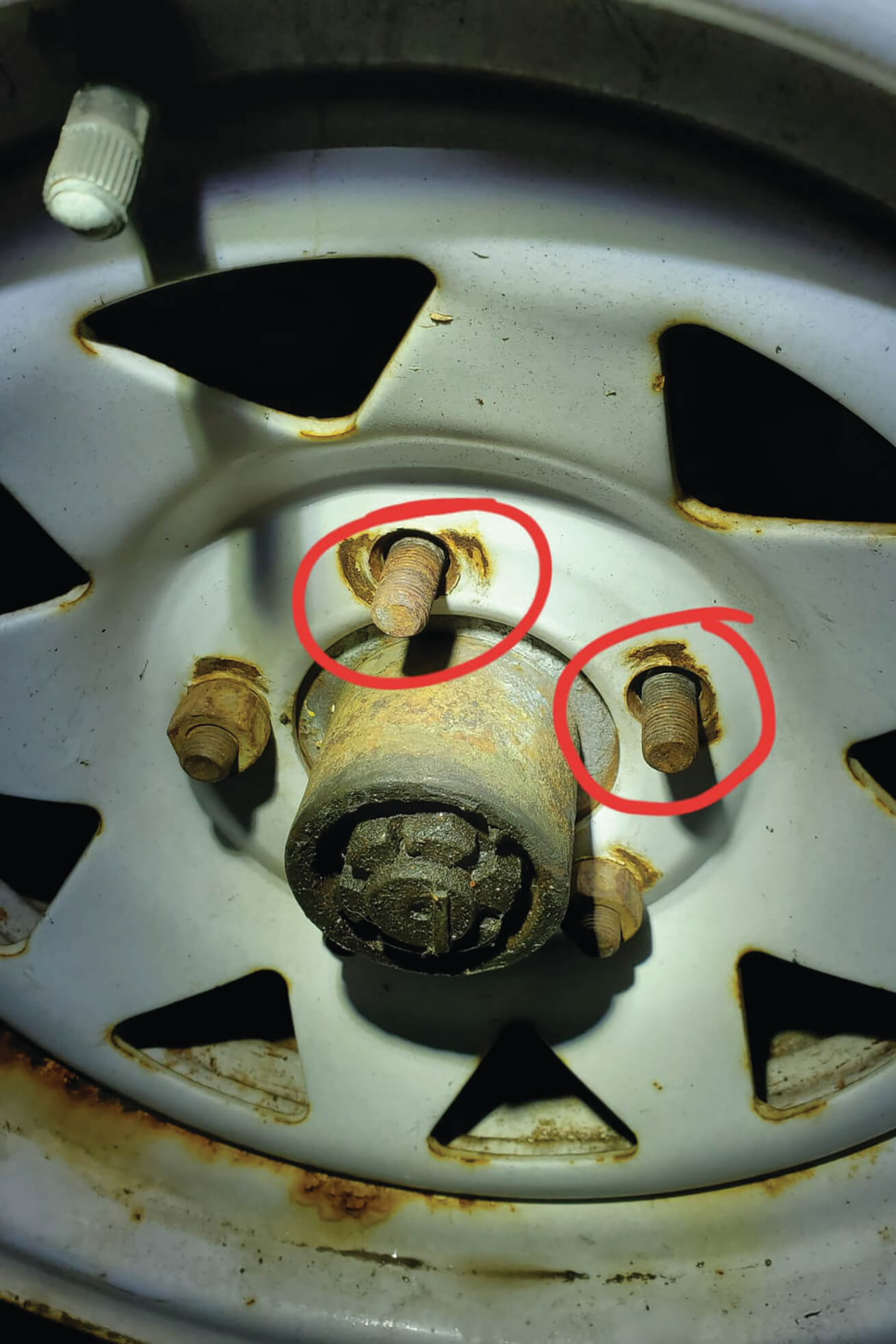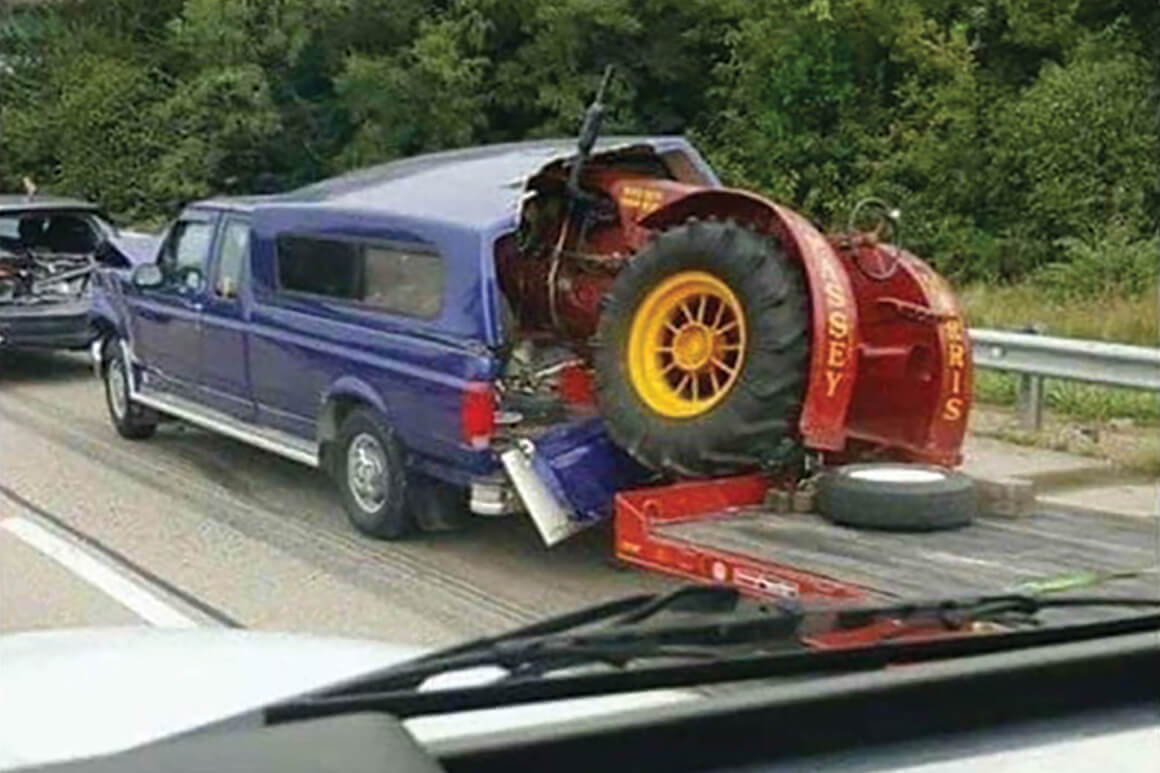December 1, 2020

Compliance Checks
The most important 30 minutes of your day
BY SCOTT OLDFIELD, TRISHIELD CONSULTING
Prevention is the most powerful tool in our arsenal, but it’s too often overlooked. During my law enforcement career, I saw every vehicle safety violation you can imagine. I also met plenty of landscape professionals who took their inspection responsibilities seriously, and for all the right reasons. These are the landscapers who make safety a priority for themselves, their companies and their communities — here is how to be one of those guys.
At the start of every shift, inspect your assigned work vehicle and trailer for mechanical and load security defects. This is your legal duty, and it will help keep you safe, as well as every other person on the road. It is the legal responsibility of the company or vehicle owner, as well as the driver, to ensure the inspection is conducted properly. If law enforcement finds a violation, all responsible parties can be charged.
A Daily Vehicle Inspection Report (PreTrip) MUST be completed every 24 hours if your commercial motor vehicle has an actual or registered gross weight over 4,500 kg. If your vehicle is registered or weighs under 4,500 kg, no daily report is needed, but you are still required to ensure it has no mechanical defects.
Best practice is to have employees do a PreTrip regardless of weight or interval. It also helps to keep a record of the vehicle’s mechanical fitness. If stopped by law enforcement, it also helps to show that the company is going beyond the requirements to ensure their vehicles are safe.
Although you are only required to do a Daily Inspection Report every 24 hours, you must still check your vehicle or towed vehicle periodically. This ensures no mechanical or load security issues have occurred during your shift.
If you are stopped by law enforcement during your workday and a defect is discovered, you would be placed out of service, and possibly charged. If you are placed out of service your vehicle will not be allowed to leave the inspection site unless the defect is fixed, or it is towed to a repair facility.
Fallout from being placed out of service
If your vehicle is registered or weighs over 4,500 kg your Commercial Vehicle Operator’s Registration Number (CVOR in Ontario), or your National Safety Code number (NSC in all other provinces) will have points assessed. If you receive too many points for violations, your company could be audited, and if sanctioned, lose the ability to operate some or all vehicles for a set period.If the driver is charged, his or her violations count toward the employer’s CVOR/NSC number which also could put the business into an audit situation. If a vehicle requires a CVOR/NSC number, violations on the driver’s record will be considered by insurance companies when policies are renewed. If the driver is charged, you will also lose the use of the vehicle for at least a day — it is not great advertising for the public to see your vehicle towed from an inspection site. It may also draw closer scrutiny from law enforcement if officers become aware your company’s vehicles may have defects and be unsafe.
Out-of-court penalties for operating Commercial Motor Vehicles with defects are expensive. Here are some typical fines, which are the same for the driver and the company: Improper Braking System, $490; Improper Tire, $240; Major Defect, $390; Load Security, $390; No PreTrip, $390; Improper Licence, $390; No Annual (PMCVI), $240.
If you are summoned to court for your violations, the fines noted above would be greater. For example, if a wheel came off your vehicle you could be looking at a penalty up to $50,000!
Major and minor defects
Proper vehicle inspections, as well as monitoring during the day, ensure your vehicle is defect-free and safe to be on the road.If your vehicle is registered for over 4,500 kg you must have the Daily Vehicle Inspection Report (PreTrip) in the vehicle and surrender it to police upon demand. The PreTrip book will have a schedule in it (Schedule 1 in Ontario) which the driver would use as a guide for the inspection. The employee must legibly fill out the report, and if any defects are found, make sure they are noted and the employer is notified.
If a defect is found during the inspection it falls within two categories. Major defects must be fixed before the vehicle can go on the roadway; minor defects must be noted on the report. The vehicle can be taken on the roadway, but defects must be repaired before the next day.
After a defect is fixed, the Daily Vehicle Inspection Report must be signed off by the individual who fixed the issue. Once a Daily Vehicle Inspection Report book is completed, it must be kept by the operator or owner for six months. The operator must keep all vehicle mechanical records on-site for two years.
How to conduct a daily inspection
Start by checking the lighting: check headlights, both low and high beam; signal lights; and brake lights. Check tires to ensure they are not flat and they have proper air pressure; make sure lug nuts are not loose; make sure the tire is not bald, and there are no cuts, slices or bulges in sidewall. Ensure the cord is not exposed (wear gloves when checking!). If the vehicle has wheel bearing caps, make sure none are missing. If hauling a trailer, check the connections to ensure security.Check the towbar to make sure there are no cracks, and the ball is not loose. Check safety chains; if bent or damaged they are noncompliant and must be replaced. If the trailer is equipped with a breakaway switch, ensure it is hooked up to the frame of the truck, not the safety chains. Check vehicles for load security. Even if the truck and trailer are enclosed, you must ensure the load will not move and it is secured as per National Safety Code 10. Check straps and chains being used for securement for damage. If damaged, they will not count towards your load securement requirements; the National Safety Code outlines how many straps and chains are required to secure loads. If the vehicle has a tarp, check to see if it is torn or ripped. Damaged tarps must be replaced if needed for hauling products such as aggregate.
Check the emergency (parking) brake. Ensure you are on a level surface, then activate the brake and put the vehicle into drive. If the vehicle moves ahead, release the brake and depress the pedal as far as it will go. If the vehicle still moves forward, your emergency brake is not working and the vehicle cannot go on the roadway, since this is a major defect.
If hauling a trailer, you must check its braking system as well. Any trailer with an actual weight over 1,360 kg. must have its own braking system. There are two types of braking systems, electric or hydraulic. Electric systems require a brake controller in the truck. As with the emergency brake, ensure vehicles are on a level lot. Set gain on the brake controller to max. Put the vehicle into drive and take your foot off the brake. Once the combination starts to move, activate the brake controller manually and do not depress truck brakes. If working properly the trailer braking system will stop combination as you are at an idle. If this does not occur, the trailer’s braking system will have to be fixed before it goes on the road.
Hydraulic or surge braking systems are activated by pushing hydraulic fluid through the brake lines when the tow vehicle is slowing or stopping, by a lever located in the tongue of the trailer. There will be a reservoir on the tongue you must check daily to ensure it has fluid and has not leaked out.
Check the steering wheel for freeplay. This can be done by landmarking a location on the steering wheel to the signal indicator. Turn the wheel to the right and once wheels start to turn mark the position on the steering wheel. Then turn the steering wheel to the left and once wheels turn, mark that spot. Then measure the distance between your marks. You then measure the diameter of the steering wheel, which gives you the allowable travel you’re allowed to have. If the distance between the marks is more, i.e. allowed two inches but the travel is three inches, it indicates you have issues with the steering components, and it needs to be fixed by a mechanic.
Other areas to inspect
Check seat belts are in proper working condition; ensure the horn works; check brake fluid; check for windshield washer fluid; and check under the vehicle to ensure no loose parts. If tires have been taken off to be changed or serviced, ensure the vehicle has been taken back in to have lug nuts retorqued. This is done after the vehicle has travelled over 100 km. The reason: studies have shown this is prime time for lug nuts to work themselves loose and cause a wheel to come off. A garage will do a recheck free of charge.Check to make sure paperwork is in the truck: ownership, insurance, and CVOR/NSC card (if applicable). Photocopies of all three documents are allowed.
Check the registered gross weight of the vehicle on the ownership. This is found on the right side of the ownership document. The registered weight will let you know if you are properly licenced to drive the vehicle. In Ontario, if the vehicle is registered for over 11,000 kg, you require a class D licence minimum.
Check the load in the trailer. If you are hauling heavy equipment such as a large skid steer, you need to know the weight. That can be obtained on the machine’s VIN plate. If its gross vehicle weight rating is over 4,600 kg you will require a Class A licence — the same licence required to operate a transport truck combination! It all depends on the actual weight of the trailer. Even a load of wet sod could put you into this category. If unsure what weight your licence is good for, check the back, as all provinces list the categories for each licence.
Finally, check your vehicle for a valid annual inspection on both truck and trailer, also called a Periodical Mechanical Commercial Vehicle Inspection. Each province requires it to be done once a year for any vehicle that actually weighs over 4,500 kg, has a registered weight over 4,500 kg or has a Gross Vehicle Weight rating of both truck and trailer greater than 4,500 kg. Each annual is affixed by the mechanic and the month and year are punched out to show when it was done. If it was done in October 2020, it is good until Nov. 1, 2021.
If you follow these steps you will be confident your vehicle will be safe on the road. If you come across a situation where you are unsure, park the vehicle and get advice.

Scott Oldfield at Congress Connect:
DRIVELIVE BRINGS IT TO LIFE
Scott Oldfield and Pat Martin of TriShield Consulting will present short videos on safety compliance at Congress Connect. Live demo topics will include braking systems; cargo securement; wheels and tires; registration, weights and inspections; and trailers and lighting. See these safety professionals in action!More information at LOcongress.com. Congress Connect participation entitles you to view presentations for a full year.
